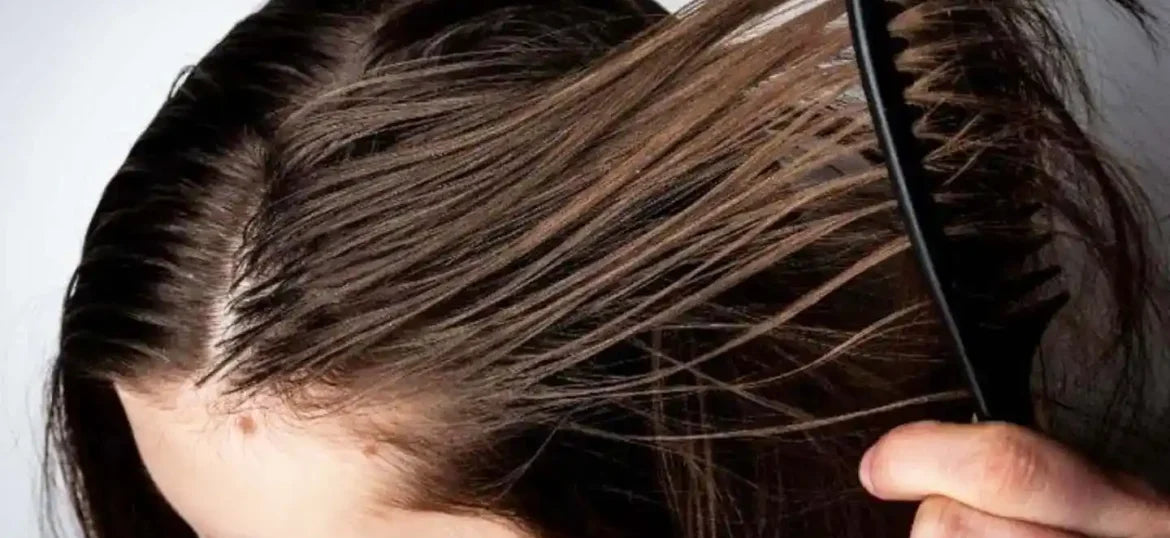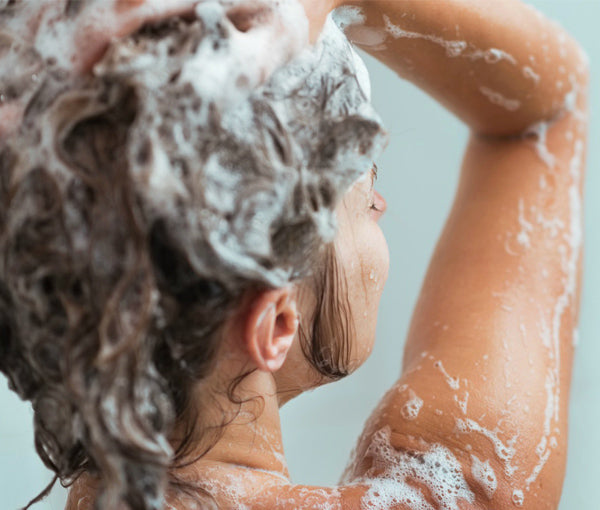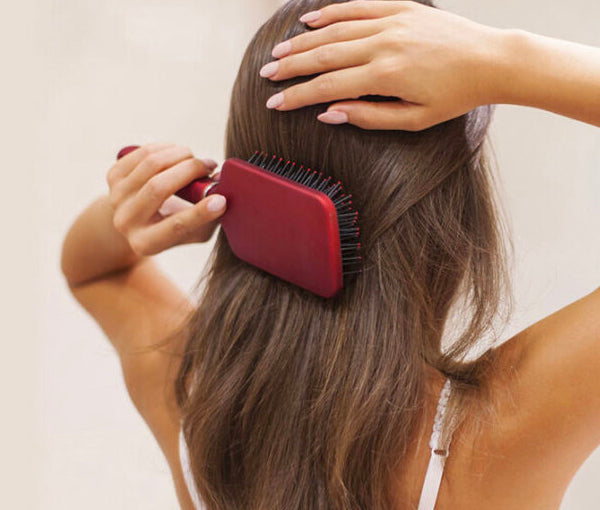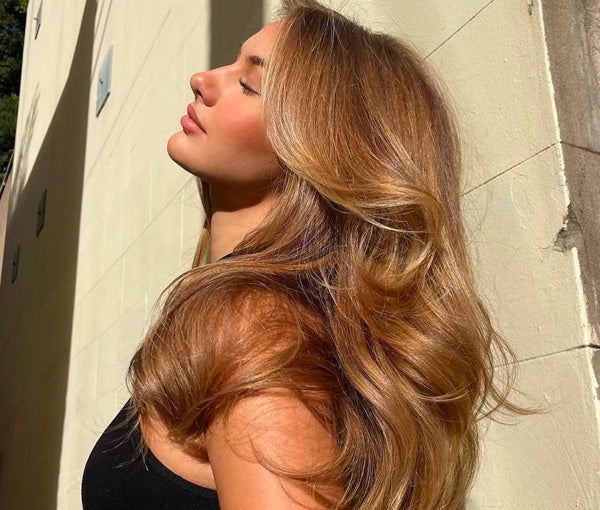We’ve all been there—waking up to find our hair looking greasy, limp, and weighed down, even though we just washed it the day before. Oily scalp and hair can be frustrating, but the good news is that with the right approach, you can regain balance and achieve fresh, healthy locks. This guide will explore everything you need to know about oily scalp and hair, including causes, treatment strategies, and the best hair care routine to manage excess oil effectively.
What is an Oily Scalp?
An oily scalp occurs when the sebaceous glands produce an excessive amount of sebum. Sebum is a natural oil that keeps the scalp hydrated and protects hair from dryness and breakage. However, when sebum production goes into overdrive, it can lead to greasy hair, clogged follicles, and even scalp issues like dandruff or irritation.
Signs of an Oily Scalp:
- Hair looks greasy and flat shortly after washing
- Scalp feels sticky or itchy
- Increased hair clumping due to excess oil
- More frequent scalp acne or irritation
What Causes an Oily Scalp?
Several internal and external factors contribute to excessive oil production on the scalp. Understanding these triggers can help you adjust your hair care routine accordingly.
- Overwashing or Underwashing
Washing your hair too often strips your scalp of natural oils, causing it to compensate by producing even more sebum. On the other hand, not washing enough allows oil, dirt, and product buildup to accumulate, making hair appear greasy.
Solution: Find a washing routine that balances oil production. Some people benefit from washing every other day, while others may need a wash every 2-3 days.
- Using the Wrong Hair Products
Heavy, conditioning shampoos and conditioners can weigh down hair and contribute to oiliness. Certain styling products may also leave residue that makes hair greasy faster.
Solution: Opt for lightweight, clarifying shampoos designed for oily scalps. Avoid applying conditioner near the roots and focus it on the ends.
3. Hormonal Changes
Hormones play a significant role in sebum production. Puberty, pregnancy, menstruation, and even menopause can lead to fluctuations in oil levels on the scalp.
Solution: Maintain a balanced diet, drink plenty of water, and consult a dermatologist if hormonal imbalances persist.
- Diet and Lifestyle Choices
What you eat directly affects your scalp health. Diets high in greasy, fried, or sugary foods can lead to increased oil production.
Solution: Include foods rich in vitamins A, B, and E, and drink enough water to keep your body and scalp hydrated.
- Stress Levels
Stress triggers the production of cortisol, a hormone that can increase oil production on the scalp.
Solution: Engage in stress-reducing activities such as meditation, exercise, or yoga to regulate hormone levels.
- Environmental Factors
Hot and humid climates can cause increased sweating on the scalp, leading to more oil buildup, while the dry air of winter and indoor heating can dry out the scalp, triggering higher sebum production.
Solution: Use dry shampoo between washes and avoid touching your scalp frequently to prevent oil transfer.
7. Medications
Some medications can affect hormone levels or metabolism, causing an oily scalp. Birth control, for example, can change sebum production. Pay attention to how your body reacts and adjust your haircare routine to manage oiliness
8. Personal Habits
Frequent hair touching, excessive brushing, or using dirty accessories can transfer oil and dirt to the scalp, leading to buildup.
Solution: Avoid touching your hair too much, clean brushes and pillowcases regularly, and ensure proper hair-washing techniques.
Best Shampoos for Oily Scalp
When it comes to managing an oily scalp, the key is choosing the best shampoo for oily hair that balances oil production while preserving scalp health. The right shampoo should control excess sebum without stripping essential moisture from your hair. Pay close attention to the key ingredients on the label. By selecting the best shampoo for oily thin hair with the right ingredients, you can maintain a healthier, less oily scalp while restoring volume and freshness to your hair.

Key ingredients for fixing oily scalps
- Reviscalp(Aniseed Myrtle): Helps regulate sebum production and soothe scalp inflammation.
- Salicylic Acid: Gently exfoliates the scalp to remove excess oil and dead skin cells.
- Zinc PCA: Helps reduce oiliness by balancing sebum levels.
- Niacinamide: Helps regulate sebum production, soothes inflammation, and improves the skin barrier
- Rosemary extract: Helps regulate sebum production, promotes scalp circulation, and reduces oiliness for a healthier scalp.
- Polyplant extract: A blend of several plant extracts known for their powerful antioxidant, anti-inflammatory, antimicrobial, and soothing properties
- Nettle extract:Rich in vitamins and minerals; known to strengthen hair, reduce dandruff, and promote scalp health.
- Lemon Peel extract: Rich in vitamin C; provides a refreshing scent while helping to reduce oiliness.

How to Treat Oily Scalp?
If your hair is really oily even if you’re washing it every day, we suggest using a shampoo containing active ingredients like zinc PCA or salicylic acid to help with excess oil, like OSKA Pure Oil Control Shampoo, that doesn’t leave your ends parched.
If a new shampoo doesn’t help, try a reset with a clarifying shampoo first. Follow up by using it along with an exfoliating scalp scrub every few washes to prevent the buildup of oils and waxes from your conditioner or styling products.
Once you have the oiliness under control, you can gradually work a non-clarifying shampoo back into your rotation. Using a shampoo tailored to your hair type will give you the best results.

Expert Tips to Manage Oily Scalp Effectively
To maintain a healthy scalp and control oil production, follow these best practices:
- Use Lukewarm Water: Hot water stimulates oil production, while cold water might not cleanse effectively.
- Shampoo Twice: The first wash removes buildup; the second cleanses the scalp more thoroughly.
- Massage Your Scalp: Use gentle, circular motions to stimulate circulation and remove excess oil.
- Condition the Ends Only: Applying conditioner to the roots can weigh hair down and contribute to oil buildup.
- Use a Scalp Scrub Once a Week: Exfoliating with a scalp scrub removes excess sebum and dead skin cells.
- Look For the Best Dry Shampoo For Oily Hair : It absorbs excess oil without stripping moisture.
- Avoid Over-Touching Your Hair: The more you touch your hair, the more oil you transfer from your hands.

Lifestyle Adjustments for Healthy Scalp and Hair
Making small adjustments to your daily habits can go a long way in maintaining an oil-free scalp.
- Wash Pillowcases Frequently: Oils from your hair transfer to your pillowcase and can reapply to your scalp.
- Reduce Heavy Hair Styling Products: Opt for lightweight or water-based styling products.
- Tie Your Hair Back in Hot Weather: Keeping hair off your face can reduce oil transfer from skin to hair.
- Limit Heat Styling: Excessive use of heat tools can make hair greasier by stimulating the scalp’s oil production.
Conclusion: Achieve Balance for a Healthy Scalp
Oily scalp and hair can be managed effectively by identifying the root cause and adjusting your routine accordingly. Whether it’s choosing the right shampoo, tweaking your washing frequency, or making simple lifestyle changes, you can regain control over excessive oil and enjoy fresh, healthy locks every day.
Looking for the best shampoo for oily hair? Try OSKA Pure’s carefully formulated oil control shampoo





